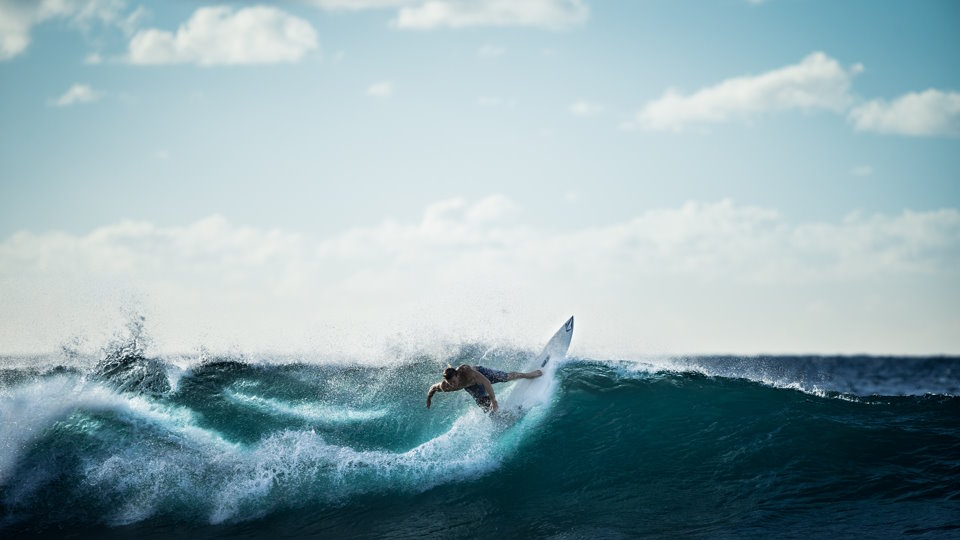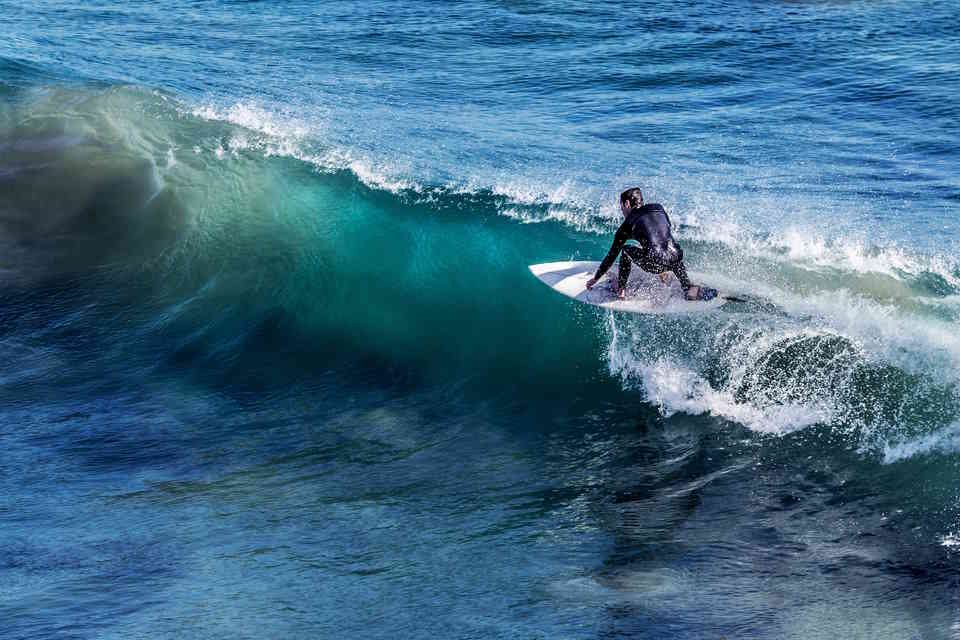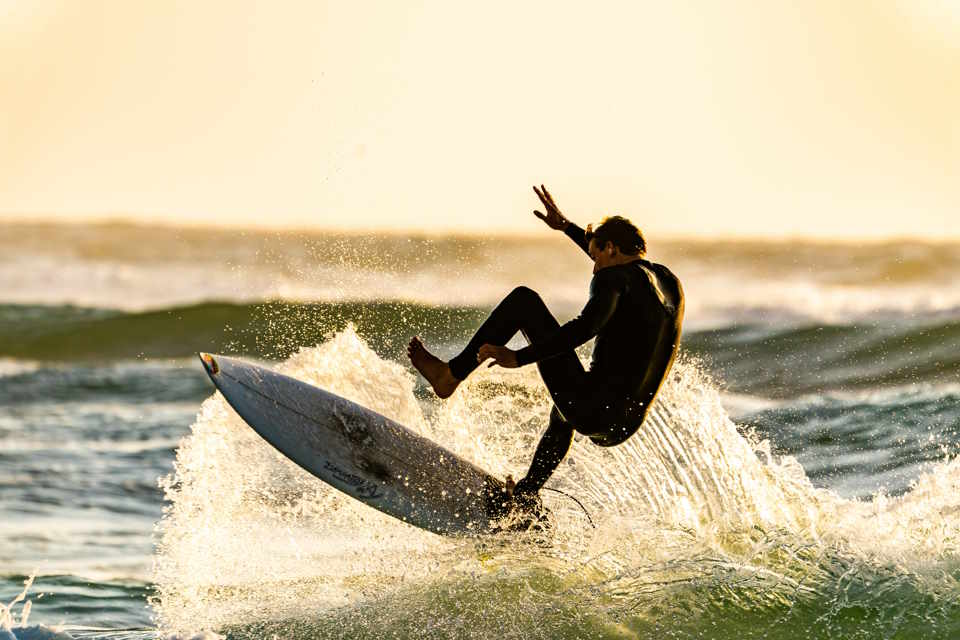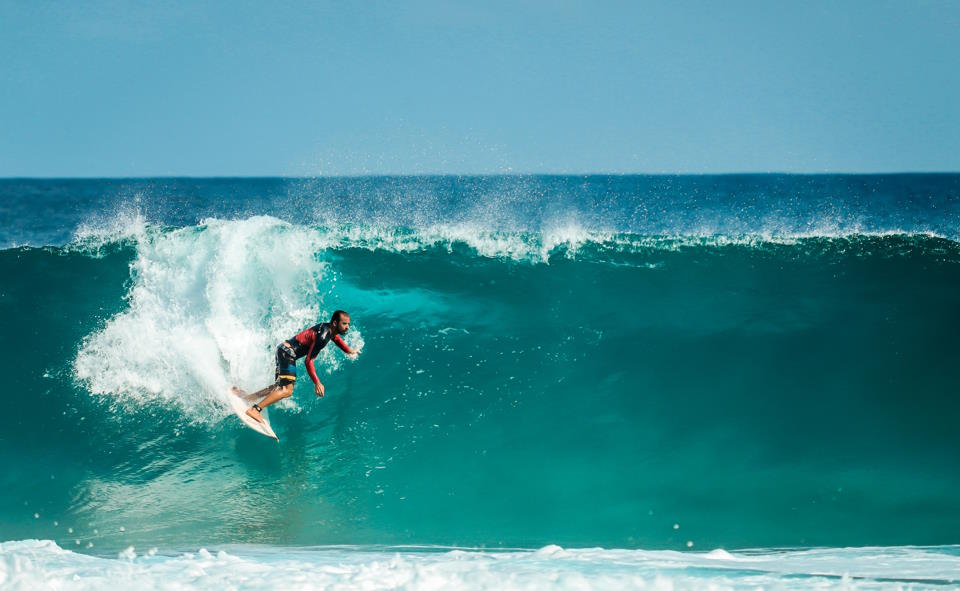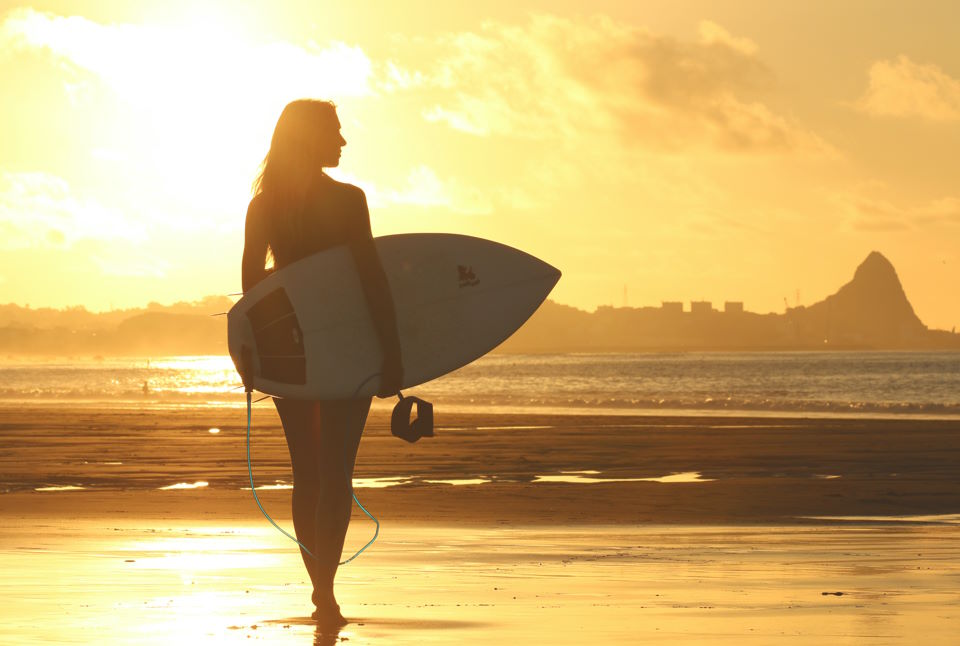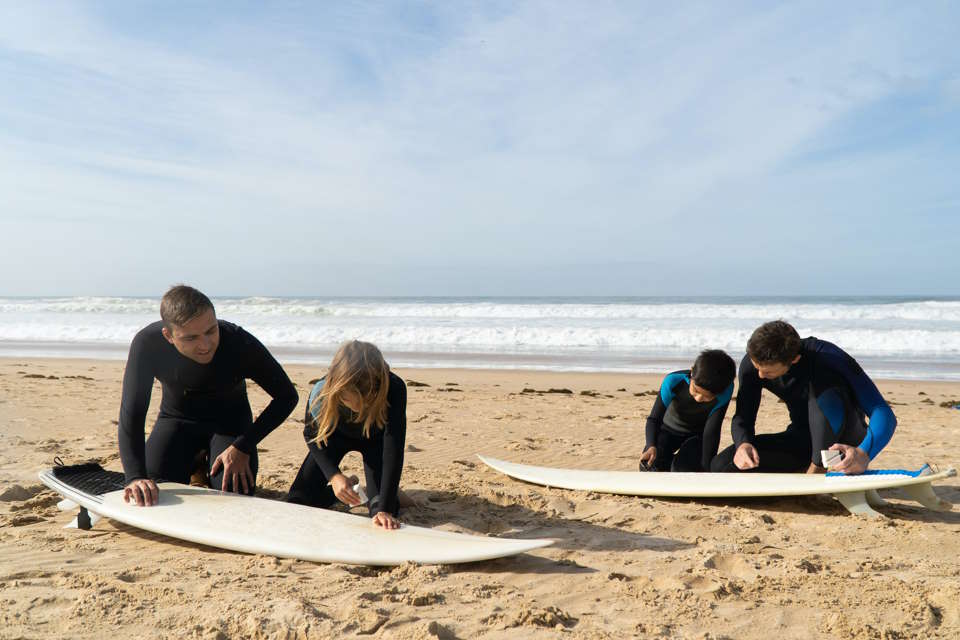Surfing is a popular water sport enjoyed by people of all ages, but many wonder if it is safe. The truth is, like any sport, surfing does come with its fair share of risks. While it is possible to suffer injuries while surfing, it is also possible to avoid them. We will explore the dangers of surfing and provide tips on how to surf safely. From broken bones and wipeouts, to encounters with sharks, we will cover it all. So, if you’re wondering if surfing is dangerous, read on to find out.
Introduction
Surfing is a popular water sport that involves riding waves on a special board. The sport can be exciting and exhilarating, but some people wonder if it can be dangerous. So, is surfing dangerous? The answer is both yes and no.
On one hand, surfing can be a relatively safe activity if proper precautions are taken. Surfers need to be aware of weather and wave conditions, choose appropriate locations, and wear the right gear. Accidents are more likely to happen when these safety measures are not followed.
- Check the weather and wave conditions before going out to surf
- Choose a location that is safe for your skill level
- Wear a leash to keep your board attached to you at all times
- Wear the appropriate wetsuit and buoyancy vest for the water temperature and conditions
On the other hand, there are certain inherent risks associated with surfing that cannot be completely eliminated. For example, surfers can be injured by their own boards, other surfers, or hitting the ocean floor. In some cases, injuries can be serious and even life-threatening. However, such risks can be minimized with effective training, the right equipment, and careful surfing practices.
- Take surfing lessons from a qualified instructor before heading out on your own
- Choose a board that is appropriate for your skill level
- Practice good surfing etiquette and avoid crowding other surfers
- Learn how to fall properly to minimize the risk of injury
Surfing can be both safe and risky depending on a variety of factors. However, with the right precautions and practices, most surfers can enjoy the sport without significant danger. As with any sport or activity, it’s important to be aware of the risks and take appropriate measures to minimize them.
Is Surfing a Risky Sport?
Surfing has become a popular sport in recent years, with more and more people taking up this thrilling activity. However, like any other sport, surfing comes with its own set of risks. If you’re considering taking up surfing, you may be wondering whether or not it’s a risky sport. The answer is yes, surfing can be a risky sport, but that doesn’t mean it’s not worth it.
One of the biggest risks associated with surfing is the possibility of getting injured. Surfing involves riding waves, which means you’ll be spending a lot of time in the water and dealing with strong currents. This can make it easy to get knocked off your board and get injured. Injuries from surfing can range from minor cuts and bruises to more serious injuries like broken bones and head trauma.
Another risk associated with surfing is the possibility of encountering dangerous marine life. While most marine life is harmless, there are certain species of sharks and jellyfish that can be dangerous to surfers. Sharks are known to mistake surfers for their natural prey, while jellyfish can inflict painful stings and cause allergic reactions.
- Always be aware of your surroundings when surfing
- Wear proper safety gear, like a wetsuit and helmet
- Never surf alone
- Know your limits and don’t push yourself too hard
Whether or not surfing is a risky sport is up to interpretation. While there are certainly risks associated with it, if you take the necessary precautions and respect the ocean, surfing can be a safe and enjoyable activity. Don’t let the risks scare you away from trying out this exciting sport.
Is It Easy to Get Hurt Surfing?
Surfing can be a thrilling experience for those who love the sea and adventure. The feeling of riding along the waves and feeling the rush of adrenaline is unmatched, but surfing can also be a dangerous activity if not approached with caution. Despite the perceived dangers, there are certain precautions you can take to minimize the risk of getting hurt while surfing.
First, it’s essential to be fully aware of your surroundings while surfing. Surfing in crowded areas can increase the chances of colliding with another surfer or getting hit by the board. It’s important to assess the waves and the nearby surfers before attempting to catch a wave to avoid potential harm.
Second, it’s crucial to invest in proper surfing gear. Wearing a wetsuit can not only protect your skin from the cold but also from potential scrapes or cuts if you fall off your board. Additionally, a well-fitted leash is essential to keep your board close and avoid it becoming a hazard to nearby surfers.
- Investing in proper surfing gear
- Being fully aware of surroundings
Third, knowing your limitations and ability level is vital to preventing injuries while surfing. Attempting to surf waves that are too big or challenging for your skill level can result in accidents and injuries. It’s important to start small and gradually progress as you build your experience and confidence in the water.
| Key Points: |
|---|
| Being aware of surroundings |
| Investing in proper gear |
| Knowing your limitations |
Surfing can be a risky sport and can result in injuries if not approached with care. It’s crucial to always stay alert, invest in the correct gear, and know your limits to avoid getting hurt while surfing. Remember, enjoying the thrill of the waves can only be achieved when safety comes first.
Can You Break Bones Surfing?
Surfing is a popular water sport across the globe. It involves riding on waves with a surfboard and requires a great deal of balance and skill. While it is a thrilling and enjoyable sport, it can also be dangerous if proper precautions are not taken. One of the biggest concerns among surfers is the risk of breaking bones.
Surfing involves riding on waves, which can be powerful and unpredictable. If a surfer falls off their board or is hit by a wave, they may land awkwardly or collide with rocks, reefs, or other surfers. This can lead to a variety of injuries including broken bones. The most common bones to break while surfing are the arms, wrists, and ankles.
While breaking bones while surfing is a possibility, it is not inevitable. Surfers can take several steps to reduce their risk of injury. One of the most important things a surfer can do is to learn proper technique and safety guidelines. This includes using the right equipment, such as a board and leash, wearing protective gear such as a wetsuit and helmet, and knowing how to fall correctly to minimize the risk of injury.
- Surfers should also be aware of the conditions before they enter the water. This includes checking the weather, tides, and wave heights, as well as being mindful of any hazards in the area such as rocks or reefs.
- It is also important to know your own limits and not push yourself beyond your skill level. Trying to ride waves that are too powerful or attempting tricks you are not ready for can increase your risk of injury.
While breaking bones is a possibility while surfing, it is not a common occurrence. With proper training, safety precautions, and awareness, surfers can minimize their risk of injury and enjoy this thrilling sport safely.
Does It Hurt to Fall Surfing?
When it comes to surfing, there’s no doubt that it’s an incredibly fun and exhilarating sport. But for those who haven’t tried it before, the thought of falling off their board and into the ocean can be quite daunting. One of the most common questions asked by those new to the sport is: “Does it hurt to fall surfing?” The short answer is: yes, it can hurt. However, with proper technique and preparation, you can minimize your risk of injury and ensure that any falls you do take don’t result in serious harm.
Firstly, it’s important to understand that the pain you experience when falling off your surfboard will depend on a number of factors, such as the height of the wave, the speed you were traveling at, and how you land in the water. If you’re unlucky enough to hit a shallow sandbank or reef, you could sustain serious injuries such as broken limbs or spinal damage. However, such accidents are relatively rare and can be avoided by surfing at beaches with deeper waters and softer, sandy bottoms.
- One of the best ways to protect yourself from injury when falling off your board is by wearing the right equipment.
- A high-quality wetsuit will not only keep you warm in the ocean, but will also provide some padding against the impact of hitting the water.
- Additionally, wearing a leash is essential for ensuring that you don’t get separated from your board in the event of a fall.
Finally, the most effective way to prevent injury when falling surfing is by learning proper technique. Experienced surfers know how to fall in a way that minimizes impact and reduces their risk of injury. For example, they will often try to fall flat on their stomach or back, rather than on their feet or head. Additionally, they will spread their arms and legs out to create more surface area, which helps to slow their descent.
Can a Wave Break Your Leg?
Surfing is a thrilling activity that provides surfers with an adrenaline rush and helps them escape from their routines. Even so, surfing comes with its fair share of risks and can be dangerous if surfers do not take the necessary precautions and lack proper training on how to handle different situations. One of the fears that could cross a surfer’s mind is what happens if they get hit by a wave. Can a wave break your leg?
Firstly, it’s essential to understand that surfing involves water, and water is not something that can be predicted with complete accuracy. There are rogue waves, currents, and tides that can be unpredictable, making it challenging for surfers to foresee waves’ patterns. Such waves can toss surfers around and could, in some cases, cause injuries.
- Injuries caused by a wave’s power can be anything from a broken bone to a wound that needs stitches.
- The severity of the injury sustained depends on the surfer’s position, the location of the impact, the size and strength of the wave, and the fins and other equipment on the surfboard.
The best way to protect oneself while surfing is to ensure that they have the necessary safety gear, including appropriate wetsuits, surfboards, leashes, and fins, and to understand the ocean and wave patterns. Safety gear and knowledge go a long way in providing surfers with the confidence they need to go out into the ocean and surf without the fear that a wave breaking their leg.
| Surfing Safety Tips |
|---|
| 1. Always surf with a buddy. |
| 2. Learn to swim and use the appropriate safety gear. |
| 3. Check the weather forecast before hitting the waves. |
| 4. Respect other surfers in the water and know surfing etiquettes. |
| 5. Be aware of your surroundings. |
Surfing can be an incredible experience, but it’s imperative to understand that it comes with its risks. That said, one of the risks of surfing is getting hit by a wave and sustaining an injury. However, with proper training, appropriate safety gear, and a deep understanding of wave and ocean patterns, surfers can reduce the chances of getting injured and avoid scenarios where a wave could break their leg.
Do Sharks Bite Surfers?
Surfing is a sport that allows you to enjoy the beauty of the ocean and the thrill of catching a wave. However, it is also a sport that involves some amount of risk. One of the biggest concerns among surfers is the risk of shark attacks. Many people wonder – do sharks bite surfers?
The simple answer is yes, sharks can and do bite surfers. However, it is important to note that shark attacks are rare and that the chance of getting attacked by a shark while surfing is relatively low. According to the International Shark Attack File, there were only 64 confirmed unprovoked shark attacks worldwide in 2019. Of those 64 attacks, only two were fatal.
While the odds of getting attacked by a shark may be low, it is still crucial for surfers to take precautions to minimize the risk. One of the most effective ways to do this is by avoiding areas where sharks are known to frequent. Shark sightings are common in areas where there are large amounts of bait fish, so surfers should avoid surfing near schools of fish or areas where the water is murky.
Here are some other tips to reduce the risk of a shark attack while surfing:
- Surf in groups.
- Avoid wearing shiny jewelry or brightly colored clothing, as this can attract sharks.
- Avoid surfing at dawn or dusk, when sharks are most active.
- If you see a shark, calmly and quickly leave the water.
It is also important to note that most shark bites on surfers are cases of mistaken identity. Sharks do not typically target humans as prey, and most bites occur when the shark mistakes the surfer for its natural prey. In such cases, the shark will often release the surfer once it realizes its mistake.
In conclusion, while sharks can and do bite surfers, the risk of a shark attack while surfing is relatively low. By taking precautions and being aware of the risks, surfers can minimize the chances of being bitten by a shark while enjoying their favorite sport.




